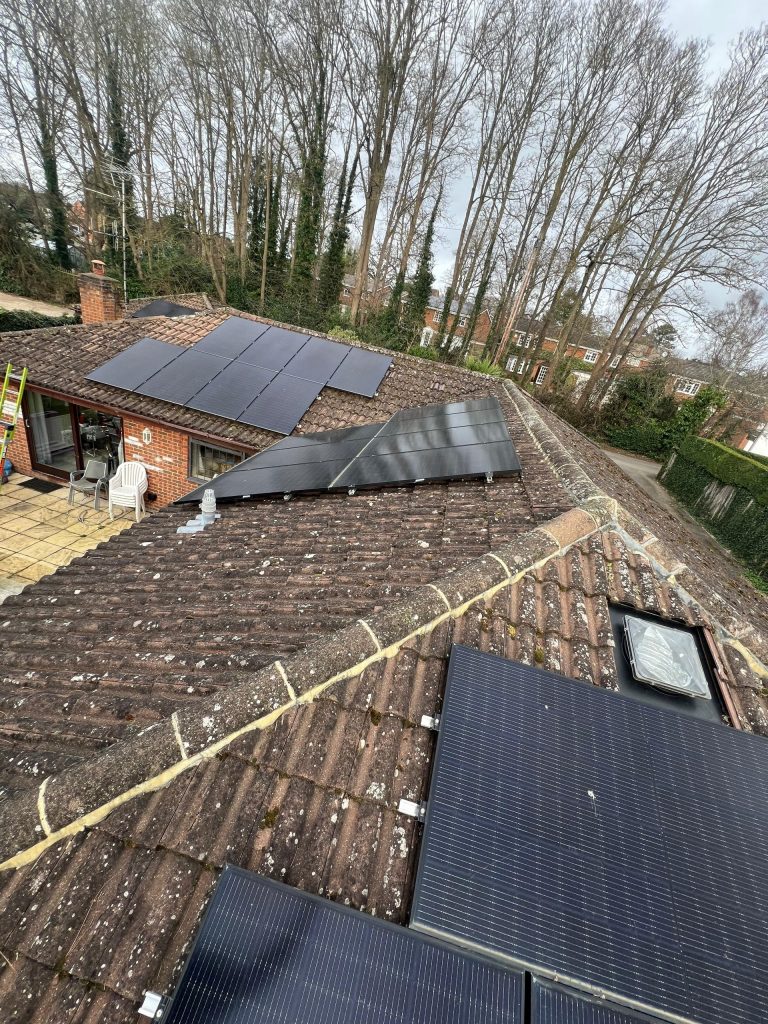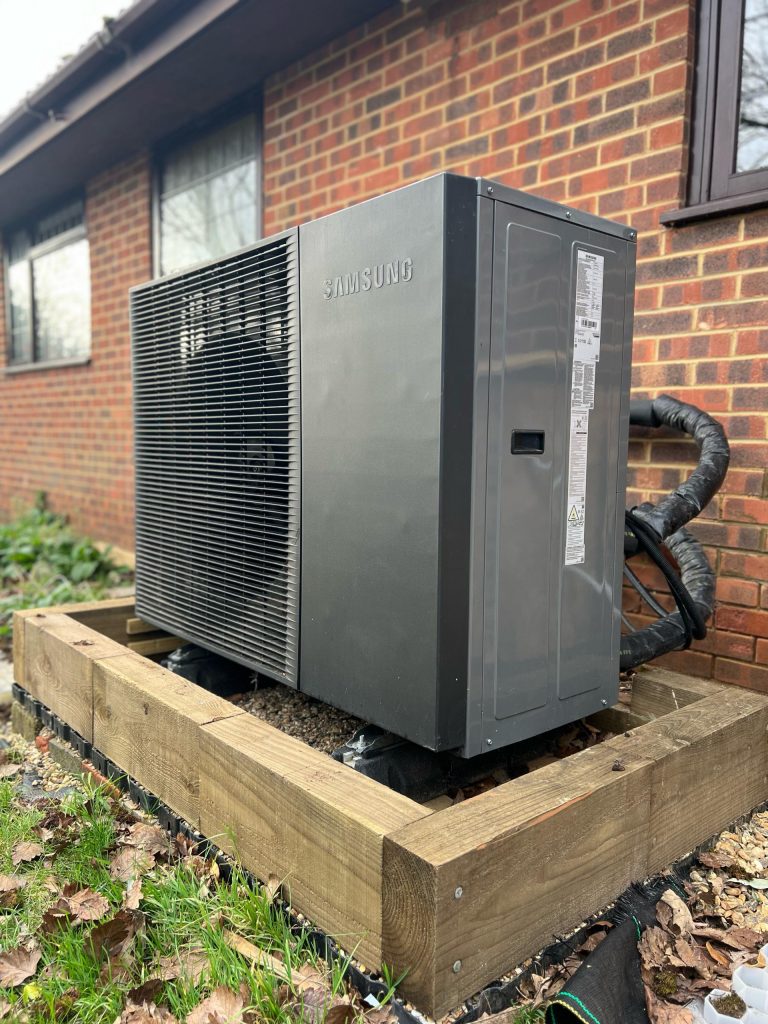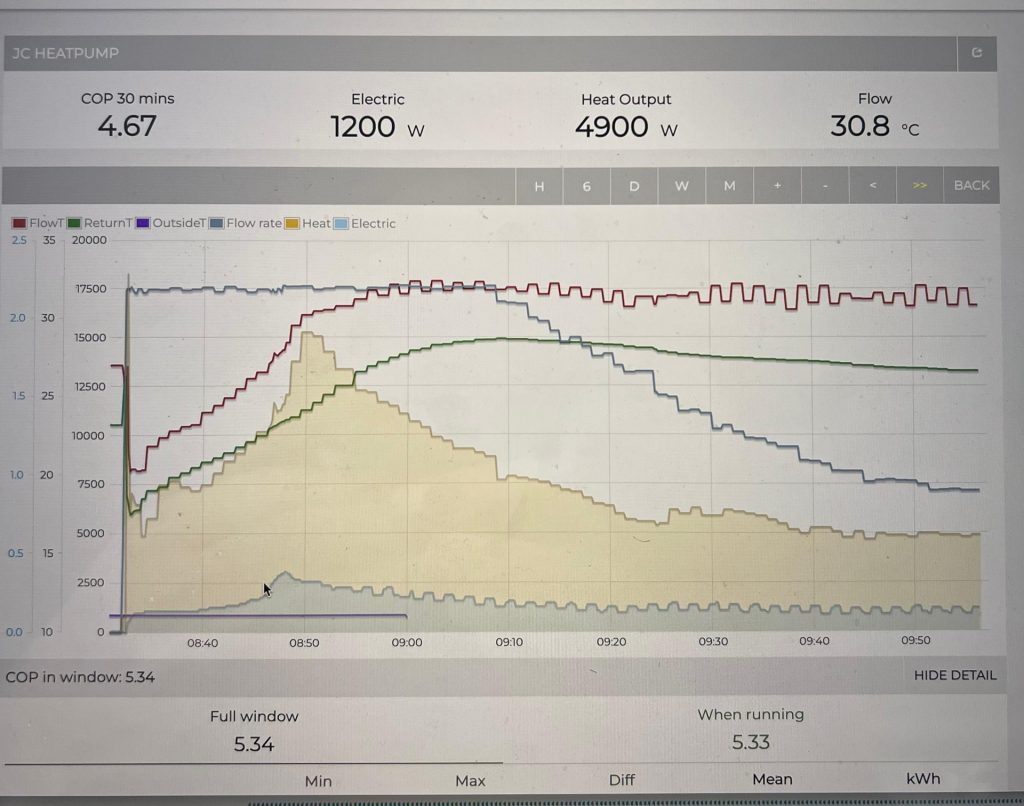If you’ve been on the fence about making some renewable changes to your house and lifestyle, how about taking a virtual step inside the house of Carter Electrical co-director Jon Carter, who has been making sustainable improvements to his house for the last two years; practising what he preaches to not only reduce his carbon footprint along the way, but also improve his bank balance! Here, Jon talks us through his journey so far, with some all-important facts and figures to support the changes he has been making, and his plans to continue his project through 2024.
Talk us through your intentions behind this journey to go greener?
Being in the trade, I have the benefit of being able to install at below-market rates, which was a huge benefit and incentive to get started on this project. My main intentions, however, were to demonstrate how using renewables together can a) reduce your carbon footprint, b) save you money, and c) earn you money.
What did the house look like at the start of the project?
The house is a 1970 bungalow, with approximately 145m2 of floor area, insulated cavity walls (although I do wonder sometimes!), old wood-framed double glazed windows, and a rather old gas boiler. The radiators throughout the house were a mix of single and double panels, which I planned to upgrade. Fortunately, the house, being an L-shape, had two zones for the heating plumbed in and 15mm legs to the radiators would help the flow rates for future heat pump installation.
What renewable changes have you made so far?
So far, I have added 7.91kWp of solar PV across the east, south and west elevations of the house to maximise solar efficiency, converting sunlight into renewable energy to power various electrical devices. Around the same time, I installed a 13.5kWh battery capable of charging and discharging energy from the grid, and storing excess solar energy to utilise during periods of high demand on the grid, or overnight. A 12kW heat pump combined with a smart Domestic Hot Water (DHW) cylinder is a more environmentally-friendly heating option compared to traditional boilers, and powered by the solar PV panels, reduces not only my carbon footprint, but my energy bills too. And of course, an EV charger was one of the first things to be installed to help power the Carter Electrical fleet!

Let’s talk facts and figures – tell us about your electricity and gas usage in 2022?
As a snapshot, in 2022 we used 17,673 kWh of gas at an average cost of 6p/kWh, mainly for heating and domestic hot water, but also a small bit for cooking, bringing our net cost of gas for the year to £1,034. In addition to this, we imported 5182 kWh of electricity costing £571 – a small part was for electric vehicle (EV) charging, but the bulk was for domestic use. This meant we had a total demand of 22,855 kWh from the grid,.
And by 2023?
Our gas usage in 2023 was 0 kWh! This was largely down to installing the heat pump and induction hob, and removing the gas to the property. If we had remained on gas with the existing boiler, the costs would have nearly doubled. Our electricity usage was 10,900 kWh, of which 7313 kWh came from the grid at an average cost of 13p/kWh. Therefore, grid electricity cost £928.64 however, I exported 1723 kWh worth £361.87 at an average of 21p/kWh. In addition to this, there were some Octopus Energy Octoplus saving credits and seven referrals which totalled £405.36. So once export was taken away from usage, my net cost of electricity was £161.41 for the year. This meant an incredible saving of over £1440 compared to 2022; our combined savings on gas and electricity was closer to over £2500.
So how much did it cost and what’s the ROI?
7kWp of solar PV with a Tesla Powerwall battery was approximately £20,000. You can get cheaper, but this system is high-specification, using SolarEdge optimisers to minimise tree shading and multiple elevations as in the case of our bungalow. It is a large battery, but this allows us to maximise charging with cheap off-peak electricity in the winter, as well as capturing all the generation in the summer. The Octopus Agile Tariff and the battery has made the unit cost of electricity extremely low.

The 12kW Samsung HTQ heat pump, Mixergy Cylinder and Homely controls came to about £12,500, although there is a £7,500 Boiler Upgrade Scheme grant available which brings the cost down closer to a boiler change. On top of that, our new radiators cost between £200-£300 per unit to swap.

It is a large initial outlay, but we are effectively buying 25 years of electricity upfront with the solar panels, and the battery then facilitates the ability to maximise the generation use and access to off peak cheaper electricity. With the cheaper electricity and the 350-500% efficiency of the heat pump, the cost to heat the house and domestic hot water drops dramatically and will only get cheaper. Remember – the price of gas will only ever go up due to it being a finite resource!

It’s a change of mindset: we buy a car, a fridge or a sofa out of necessity and it’s not always the cheapest. We need electricity to run the house and we need to heat the house in winter and hot water all the time, so why not invest in something that allows you to do it cheaper and also helps reduce the use of fossil fuels at the same time?
What’s next on the green agenda?
I want to look to improve the efficiency of the heat pump, which is a lot of fun through experimentation and playing with settings to best suit our climate. I installed data collectors on all new equipment, so I’m constantly monitoring it to see if there are improvements that can be made. Next on the list, is to improve the insulation of the house and minimise draughts – I have a lot of old, leaky double-glazed windows that could be improved! Tech-wise, I’d love a wind turbine, but it’s not feasible (or so I’m told by my wife).
What advice would you give customers looking to make steps to go greener at home?
Do heat pumps work? Yes. Do solar panels work? Yes. Do battery storage systems work? YES. Together they are a large initial investment, however, if you have the capital expenditure, then it is clear and obvious you can reduce the operational expenditure of your house quite significantly. I reduced my utility costs by 90% in my first year of making these changes, and I am looking forward to continuing to analyse my energy usage in 2024 to further enjoy the long-term financial benefits, as well as knowing I’m reducing mine and my family’s carbon footprint! Contact us today to conduct a thorough analysis of your energy needs, local climate conditions, and available incentives, to help tailor a solution to your specific requirements.
